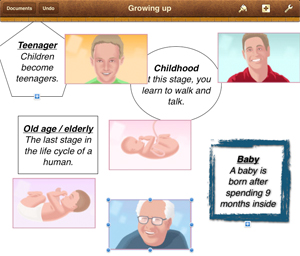
Many of my posts look at ways to use the iPads in Literacy and Numeracy to enhance learning and engage, motivate and inspire children. But how can using the iPad also help children in other subjects like Science, History or Geography?
Here are some ideas about how using the iPad can help students to show, share and develop their learning in these subjects, with a distinct focus on Science.
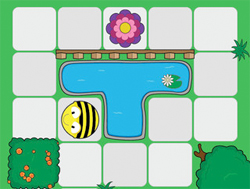
As part of the proposed new draft primary curriculum for ICT, there is a significant emphasis on computer science. Below I've included a selection of apps which can be used in both Key Stage 1 and Key Stage 2. The apps included range from basic skills in coding a Beebot to more advanced skills in coding games and simulations in apps such as Hopscotch and Codea.
I've also included some other useful 'ICT' apps, which can be used to develop a pupil's typing skills and spreadsheet skills.

As the Government abandons its plans to replace GCSE’s with English Baccalaureate Certificates, it has unveiled proposals to strengthen the national curriculum in England. The consultation exercise includes plans for a new computing curriculum designed to equip students with the basic skills and drive higher expectations and standards. Under the new approach, schools will be encouraged to shape the curriculum to meet the aspirations and priorities of pupils. But it overlooks one thing: how do you cater for and engender creativity and flair?
It was Albert Einstein who famously said that “Imagination is more important than knowledge.” For many students, seeing the germ of an idea flourish and grow empowers them with a renewed confidence and teaches them so much more about themselves. As such, it is incumbent upon teachers to try and develop lesson plans that capture the passion and drive that resides in everyone and help draw it out. Nowhere is this more apparent than in app development work. There is something unique about app development that sparks the imagination and fires a student’s creativity and ingenuity. For teachers and education professionals alike, tailored lessons based on app development may provide the seed that engenders a spirit of discovery and engagement that ultimately can be built upon across the entire computing curriculum.
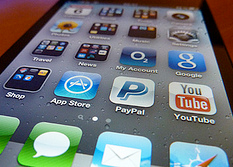
2012 has been an amazing year for my growth as a professional. The main catalyst of this growth was when I started engaging with like-minded educationalists around the world on Twitter in January of this year. In particular, I learnt about new methodologies like brain-based learning, flipping the classroom and a variety of technology-based teaching aids.
The area I explored most fervently was the bewildering array of educational software and apps for learning. In what follows, I would like to offer a round-up firstly of the apps I found particularly useful, as well as those which disappointed and annoyed me. I will finish by listing some of the most promising apps I would like to trial next year.
Photo credit: Sean MacEntee
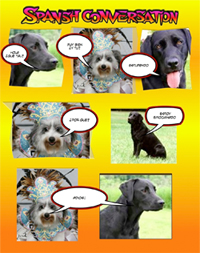
1. Comic life - creating conversations as a comic.
I remember being taught French at high school, and the first thing everybody had to do was a simple conversation with a partner. This is my third year teaching Spanish to Year 6, and I have always started with that same topic. To freshen up this tried and tested formula, though, I have the children create comic strips of their conversation. Most children use pictures of themselves (using the iPad's camera) Whilst others will copy pictures from the internet, or even use images from their photo library of other family members, friends or even pets to create a 'Que tal' conversation.
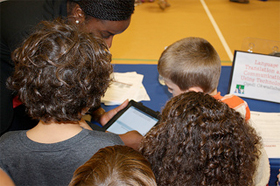
The use of apps in the classroom is now commonplace. The challenge speech and language therapists face is knowing the best way to use apps in this environment. With the sheer magnitude of apps available, it can be difficult to sort through and find an app which targets specific communication goals. Many of the available educational apps can easily be incorporated into the therapy setting to collect data, record conversational samples, motivate students or be used as an augmentative assistive communication device.
Considerations as to whether the student can work using apps on their own, or need an assistant to monitor or provide prompts when using an app, need to be made. Some students will be able to work through an app if the app has a clear journey and the interface is intuitive. However, in most situations, the app would be better used with involvement from the speech therapist, who can not only monitor use, but also encourage and observe how the app is being used. Often, a student’s use of an app may provide interesting information about how they problem solve, their attention, and their memory of how to use the app.
The Government has said that calculators will be banned in maths tests for 11-year-olds from 2014. Here are five cool apps for Android and IOS that should help pupils to sharpen their mental arithmetic and learn how to do more maths in their minds.
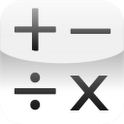
A no-nonsense app with a plain but clean interface, Math Workout helps pupils practice addition, subtraction, multiplication, division, indices, decimals and more. Its “Brain Cruncher” mode is good for training the mind to hold numbers in memory, and the “Times Table Master” should be particularly useful to primary pupils who are laerning their tables. Players must complete quite a few rounds on the easier levels to unlock the harder ones: this should ensure that pupils master the basics before moving on to harder questions, though it may irritate more accomplished mental mathematicians.
Links to app: Android, Android (Free version)
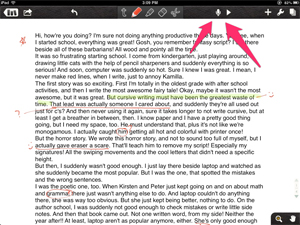
When it comes to learning, feedback is critical. So when it comes to one's writing, the principle is no different.
I have been teaching English for only six years but have struggled with this feedback process time and time again. I realise it is the most important part, and yet to do it effectively, I must commit literally hours to making sure I do it right. It's the proverbial thorn in my side.
Then when we went 1:1 with iPads in December of 2011, we discovered Notabilty. I played around with it and at first was impressed. I thought it to be a very versatile note-taking app. Then I discovered that it also has the ability to record audio along with the notes. And that's when the lightbulb exploded.
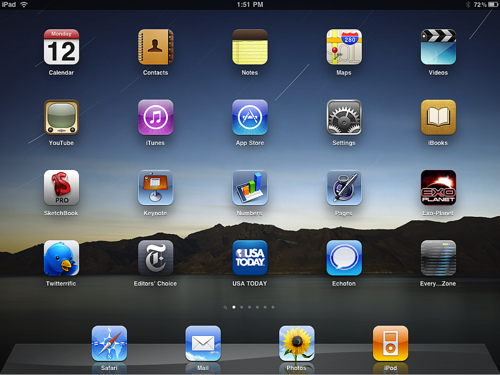
One of the things that really excites me about the iPad is the ability of the students to show their learning. I am not talking about the end product here, I am talking about the act of learning that can be shown by students recording their processes. It is often about the student putting the information they have learnt into a context. It is this contextualisation that helps the students create meaning.
Here are 10 apps that give students the opportunity to showcase, share and then reflect on their learning. Enjoy, some of these double up as my favourite apps too.
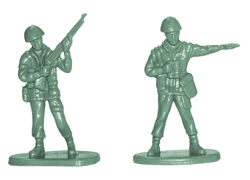
It is very easy to find a list of recommended apps for general or subject specific use. However, one of the iPads greatest strengths is its ability to help personalise learning for all. The following ideas are only a snapshot of the potential of the iPad when addressing the needs of each student (soldier).
‘Quiet, obedient and consistent, the Soldier charges into every assignment and stops only once enough damage is done to get the desired grade. Soldiers don’t show off. Soldiers don’t ask questions. Soldiers don’t complain. Soldiers just get the job done.’
Trademark question: “What will we be graded on?”
iPad Tip: Create an audio-note using Soundcloud so they can review instructions. The educator can make suggestions for extension tasks. It also acts as an excellent prompt if the educator can see the soldier doesn’t want to collaborate.

A community-driven platform for showcasing the latest innovations and voices in schools
Pioneer House
North Road
Ellesmere Port
CH65 1AD
United Kingdom